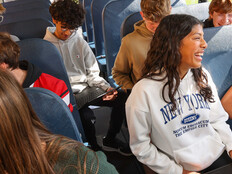Schools Need Robust Networks to Support Internet of Things
Recognizing the value of smart and connected classrooms, most school districts are experimenting with the Internet of Things or plan to do so in the near future. While IoT deployments are relatively new to education, industry observers expect the technology to make a big impact thanks to its potential to reduce costs, improve security and boost student engagement.
But will current K–12 networks be ready to carry the onslaught of additional traffic? Like any other technology introduced on campus, IoT will need a robust infrastructure to back it.
SIGN UP: Get more news from the EdTech newsletter in your inbox every two weeks!
How K–12 School Will Adopt IoT
According to a CDW survey from 2017, 83 percent of responding school districts agree their IoT investment will increase in the coming years. In school settings, IoT is used primarily for physical building security — door locks, smart lighting and HVAC systems, video surveillance and sensor monitoring. Additionally, IoT improves data collection for better business decisions, location tracking, asset tracking and weather monitoring.
Similar to the rise of mobility and one-to-one computing programs, IoT will undoubtedly impact IT infrastructure. School districts would be wise to consider now what capacity and capabilities their networks will need to support smart devices and IoT applications in the near future.
Ready or Not, Now's the Time to Prepare for IoT
In Kansas, Olathe Public Schools rolled out an Aerohive Networks 802.3ac Wi-Fi network last year to support one-to-one computing and IoT initiatives. Olathe runs several thermostats on the wireless network, along with wearable devices such as blood sugar monitors that automatically send reports about students to school nurses, says Jay Merkle, wireless network engineer for the district.
To prepare for IoT deployments, IT leaders should start by thoroughly assessing their existing network infrastructure. An IDC white paper, “Prepare for Billions: The IoT 2020 IT Readiness Indicator,” measures organizations’ IoT strategy and infrastructure planning based on cloud-first delivery; data flow and action control; governance, risk management and compliance; and advanced analytics and insight.
School districts should seize the opportunity to reuse existing IT infrastructure wherever possible, pairing it with next-generation development and delivery frameworks to support IoT. Most deployments will call for a mix of on-premises systems and public and private clouds, according to the IDC report.
Now’s the time for IT leaders to learn about the limitations of their existing infrastructure. Many K–12 networks are aging and based on outdated technology. Network complexity and a number of layers can create silos that prevent systems from being efficiently managed in a centralized manner.
IT managers can look to reduce the number of layers in network design and focus on placing more intelligence at the edge with small, high-capacity switches, rather than overwhelming the core data center with the incredible volume of data being collected by sensors and other smart devices.
Like Olathe Public Schools, districts can plan for greater network density and capacity. Those deploying new wireless access points should select 802.11ac Wave 2 technology for high performance. In addition, schools will likely need Bluetooth or near-field communication to connect low-power IoT devices that don’t use Wi-Fi.
Another measure to explore is IoT containment, which essentially incorporates network virtualization to assign profiles for groups of IoT devices and place them in a virtual container. This limits communication to the devices within those environments and minimizes potential damage from a security breach.
With some advance IT infrastructure preparations, schools will soon be ready to enjoy IoT initiatives that generate real-time data and useful insights for administrators, educators, parents and students.









